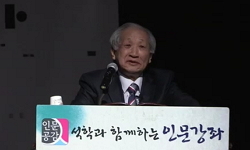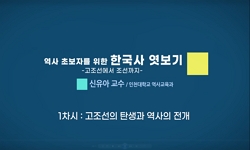The Bokcheondong Tombs located alongside Suyeong Bay was the centre of the Former Gaya with the Daesungdong Tombs of Gimhae and it was the cemetery of the leader. However, it has been undervalued under the shadow of Gimhae group. After the conquest of...
http://chineseinput.net/에서 pinyin(병음)방식으로 중국어를 변환할 수 있습니다.
변환된 중국어를 복사하여 사용하시면 됩니다.
- 中文 을 입력하시려면 zhongwen을 입력하시고 space를누르시면됩니다.
- 北京 을 입력하시려면 beijing을 입력하시고 space를 누르시면 됩니다.
https://www.riss.kr/link?id=A106090169
- 저자
- 발행기관
- 학술지명
- 권호사항
-
발행연도
2019
-
작성언어
-
-
주제어
복천동고분군 ; 대성동고분군 ; 가야 ; 신라 ; 연산동고분군 ; 동래패총 ; 고총고분 ; 수장묘 ; 전사집단 ; 신식도질토기 ; 석곽묘 ; 전기가야 ; 후기가야 ; 다라국 ; Bokcheondong tombs ; Daesungdong Tombs ; Gaya ; Silla ; Yeonsandong Tombs ; Dongrae shell mound ; tomb with a giant mound ; tomb of a chief ; warrior group ; new style Dojil pottery ; stone lined tomb ; Former Gaya ; Latter Gaya ; Dara
-
KDC
900
-
등재정보
KCI등재
-
자료형태
학술저널
-
수록면
249-294(46쪽)
- DOI식별코드
- 제공처
- 소장기관
-
0
상세조회 -
0
다운로드
부가정보
다국어 초록 (Multilingual Abstract)
This paper was projected to correct this wrong perception. Based on my previous studies, it was revalued that the real status of Bokcheondong Tombs and its influence and role in developing Gaya and Silla.
As a result, although holding a common religious ceremony, but the buried leaders in Bokcheondong Tombs were different from them of Daesungdong Tombs in the 4th century. The leaders of Daesungdong Tombs had got strong foreign character, but the group of Bokcheondong Tombs was stable group based on the native society. These two group were united into Former Gaya, community and difference coexisted in two groups.
In the 5th century (the transition period and the Latter Gaya), the group of Bokcheondong Tombs adapted to the social change and created new type of tomb and artifact. It influenced to the formation of the culture of Latter Gaya and Silla as well as the formation of the culture of middle Gohun Period in Japan. In the latter of the 5th century, it lost its strength but played a role as a part of Gaya with the group of Yeonsandong Group.
The Bokcheondong Tombs located alongside Suyeong Bay was the centre of the Former Gaya with the Daesungdong Tombs of Gimhae and it was the cemetery of the leader. However, it has been undervalued under the shadow of Gimhae group. After the conquest of Gogurye, it played a crucial role in developing new culture in Yeongnam area in the first of the 5th century. With emerging the culture of the Silla nobility in the latter of the 5th century, although it served as a foundation for its growing, but it was upstaged by Silla, and sometimes it was misunderstood that the Bokcheondong Tombs was already incorporated into Silla.
This paper was projected to correct this wrong perception. Based on my previous studies, it was revalued that the real status of Bokcheondong Tombs and its influence and role in developing Gaya and Silla.
As a result, although holding a common religious ceremony, but the buried leaders in Bokcheondong Tombs were different from them of Daesungdong Tombs in the 4th century. The leaders of Daesungdong Tombs had got strong foreign character, but the group of Bokcheondong Tombs was stable group based on the native society. These two group were united into Former Gaya, community and difference coexisted in two groups.
In the 5th century (the transition period and the Latter Gaya), the group of Bokcheondong Tombs adapted to the social change and created new type of tomb and artifact. It influenced to the formation of the culture of Latter Gaya and Silla as well as the formation of the culture of middle Gohun Period in Japan. In the latter of the 5th century, it lost its strength but played a role as a part of Gaya with the group of Yeonsandong Group.
동일학술지(권/호) 다른 논문
-
1908년 東萊府 東下面 거주민의 일상적 삶과 집단적 정체성- 隆熙 2년 東萊府 東下面 戶籍을 바탕으로-
- 부산광역시사편찬위원회
- 김현진
- 2019
- KCI등재
-
- 부산광역시사편찬위원회
- 강대민
- 2019
- KCI등재
-
3 · 1운동의 사회 · 경제적 배경 -동시대 원인분석과 부산의 지역성-
- 부산광역시사편찬위원회
- 배석만 ( Bae Suk-man )
- 2019
- KCI등재
-
부산진 일신여학교의 3 · 11 독립만세 시위와 여성운동
- 부산광역시사편찬위원회
- 오미일 ( Oh Mi-il )
- 2019
- KCI등재





 KISS
KISS







